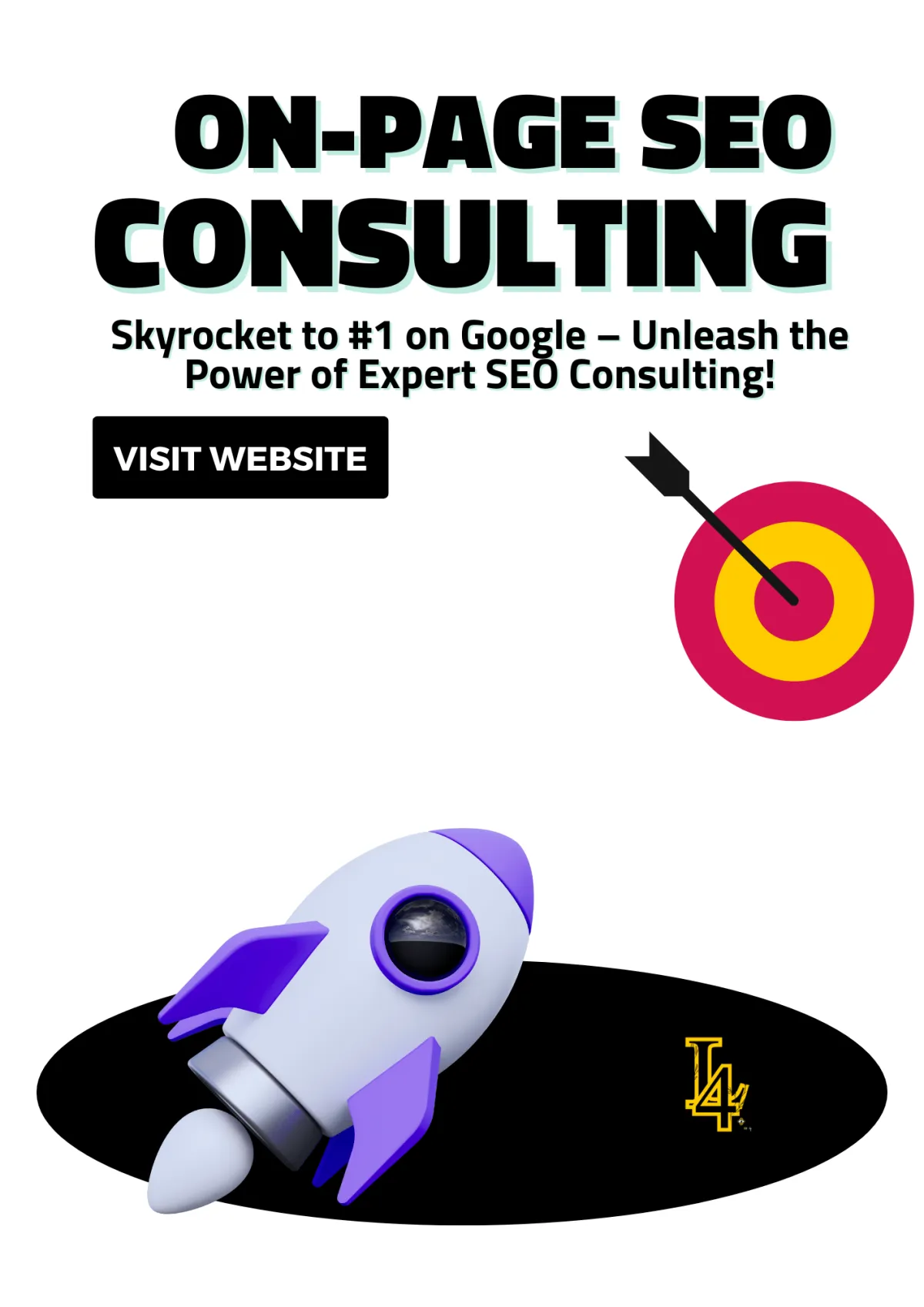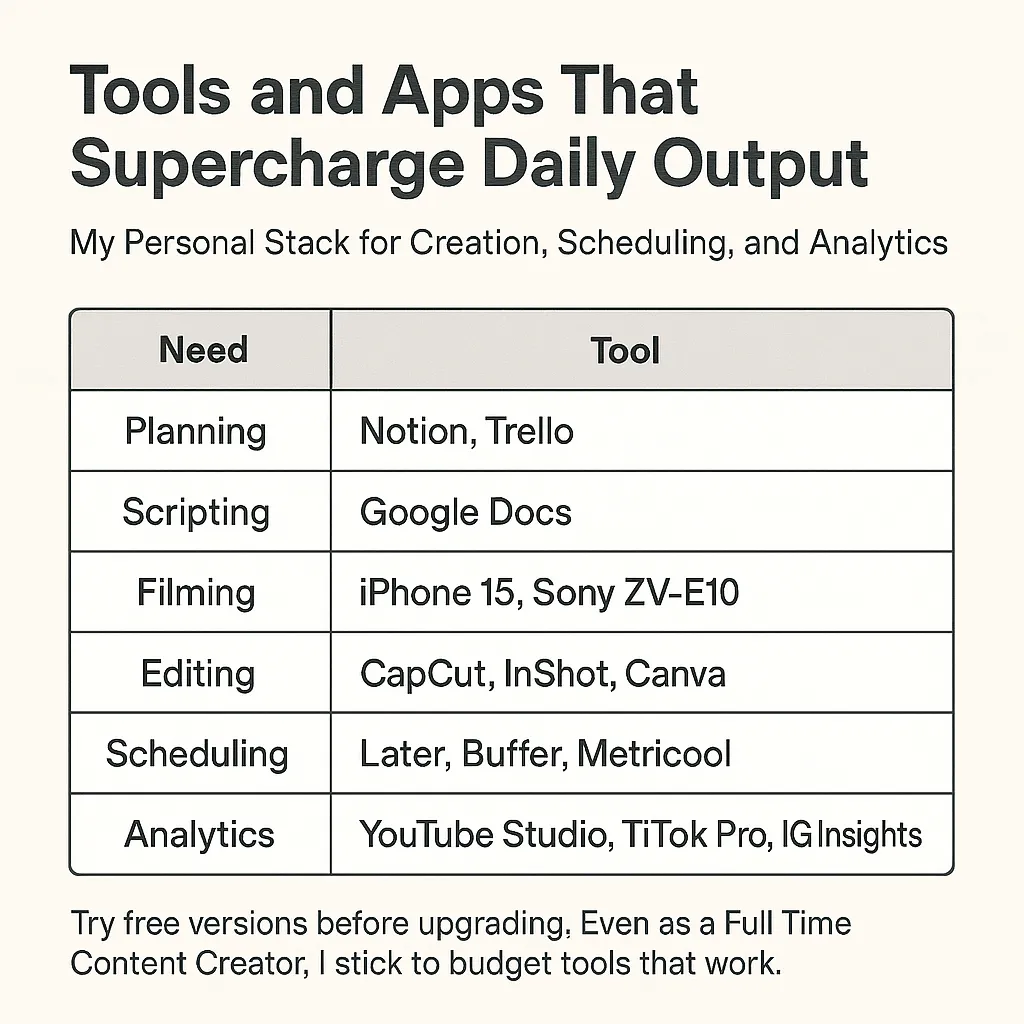
Can You Pay Google for Organic Rankings? Here’s the Real Answer
Table Of Content
Can You Pay Google to Improve Your Organic Rankings? Here’s the Truth
The First Step to Rank on Google: Mastering Keyword Research
What I Did to Rank on Google with Keywords:
Creating SEO-Friendly URLs to Rank on Google
How I Fixed My URLs to Rank on Google:
How Optimized Title Tags Helped Me Rank on Google
Writing Meta Descriptions That Help You Rank on Google
How I Improved My Meta Descriptions:
Why Organizing Content with Header Tags Helps You Rank on Google
How I Used Header Tags to Rank on Google:
Publishing Quality Content to Rank on Google
Using ALT Text to Rank on Google with Images
Tracking Progress to Rank on Google
How I Monitored My Efforts to Rank on Google:
The Key to Rank on Google: Combining Strategies
How Structured Data and Schema Markup Can Help You Rank Higher on Google
What is Structured Data and Schema Markup?
Why Schema Markup Matters for Ranking on Google
How I Got Started with Schema Markup
Step 1: Identify Key Pages for Schema
Step 2: Use Google’s Structured Data Markup Helper
Step 3: Add the Code to My Site
Schema Markup for Different Types of Content
What the Experts Say About Schema Markup
My Favorite Tools for Schema Markup
The Results Speak for Themselves
Why Schema Markup is Worth the Effort
Building Topic Clusters to Dominate Rankings on Google
What Are Topic Clusters and Why Do They Work?
How I Built My First Topic Cluster
Step 1: Researching the Core Topic with SEMrush
Step 2: Diving Into Competitor Insights with SpyFu
Step 3: Validating Trends with Google Trends
What I Learned from Building Topic Clusters
Lesson 2: Quality Over Quantity
Examples of Topic Clusters for Different Niches
Practical Tools to Build Your Own Topic Clusters
The Power of Analytics in Achieving A Higher Ranking on Google
Using Google Analytics to Boost Rankings
1. Identifying High-Performing Pages
2. Understanding User Behavior
3. Pinpointing Traffic Sources
Leveraging Google Search Console
1. Monitoring Keyword Rankings
3. Tracking Backlink Performance
Key SEO Metrics to Monitor for Ranking Success
Checklist: Must-Track SEO Metrics
Can You Pay Google to Improve Your Organic Rankings? Here’s the Truth
No, you can’t pay Google to boost your organic rankings—but don’t worry! In this article, I’ll explain how we use proven strategies to get your website to the top.

The First Step to Rank on Google Organically : Mastering Keyword Research
When I began, I had no idea what keywords were or why they mattered. All I knew was that people weren’t finding my site. After some research, I learned that keywords are what people type into search engines, and using the right ones can help your site rank on Google.
What I Did to Rank on Google with Keywords:
Used Tools: I started with free tools like Google Keyword Planner to find popular search terms.
Focused on Long-Tail Keywords: These are specific phrases like “how to rank on Google fast” that have less competition and are easier to rank for.
Example:
Instead of targeting “SEO tips,” I wrote content optimized for “easy SEO tips to rank on Google,” which brought in more traffic from specific searches.
Creating SEO-Friendly URLs to Organically Rank on Google
My early URLs were messy and confusing—think “www.mysite.com/abc123.” I didn’t realize how much this hurt my chances to rank on Google until I discovered that URLs should be simple and descriptive.
How I Fixed My URLs to Rank on Google:
Changed “www.mysite.com/page1” to “www.mysite.com/rank-on-google-tips.”
Ensured every URL matched the content on the page.
Why It Worked:
Clean URLs help Google understand what your page is about, which improves your ranking. Plus, users are more likely to click on links that make sense.
How Optimized Title Tags Helped Me Rank on Google
I used to write vague page titles like “Home” or “Blog Post 1,” which didn’t attract clicks. Once I learned about title tags, everything changed.
What I Did:
Added my target keywords to every title tag, like “Proven Tips to Rank on Google Fast.”
Kept titles under 60 characters so they wouldn’t get cut off in search results.
The Result:
My click-through rate improved almost immediately, helping my site rank higher on Google.
Writing Meta Descriptions That Help You Rank on Google
Meta descriptions were another thing I ignored early on. I didn’t realize they’re like a mini ad for your site in search results.
How I Improved My Meta Descriptions:
Kept them under 160 characters.
Included my keywords naturally, like “Learn how to rank on Google with simple, actionable tips.”
The Impact:
Clear, keyword-rich meta descriptions not only boosted my traffic but also increased my ranking by making my pages more appealing to users.
Why Organizing Content with Header Tags Helps You Rank on Google
Before I understood SEO, my content was one giant block of text. It wasn’t fun to read, and it definitely didn’t rank on Google.
How I Used Header Tags to Rank on Google:
H1 Tags: Used for the main page title, like “How to Rank on Google Easily.”
H2 and H3 Tags: Subheadings broke the content into digestible sections, like “Why Keywords Matter to Rank on Google.”
Example:
I turned a cluttered article into a well-organized post, making it easier for users and search engines to navigate.
Publishing Quality Content to Organically Rank on Google
At first, my blog posts were short and unhelpful. Then I realized that to rank on Google, I needed to write content that solved real problems.
What Changed:
Researched what questions people were asking online.
Wrote in-depth articles that provided actionable answers.
Example:
I created a guide titled “How to Rank on Google: A Beginner’s Step-by-Step Guide.” The post answered common questions and became one of my top-performing pages.
Using ALT Text to Rank on Google with Images
Images were an afterthought when I started. But then I learned about ALT text, which describes an image for search engines and can help your page rank on Google.
What I Did:
Renamed image files with descriptive keywords, like “rank-on-google-chart.jpg.”
Added ALT text that included my target keyword, like “Steps to rank on Google.”
The Result:
Optimizing images not only improved my ranking but also made my site more accessible to users with disabilities.
Tracking Progress to Rank on Google
One of the biggest mistakes I made was not tracking my results. Once I started using Google Analytics and Search Console, I gained insights into what was working and what needed improvement.
How I Monitored My Efforts to Rank on Google:
Used Google Analytics to see which pages got the most traffic.
Monitored Google Search Console for keyword rankings and errors.
Example:
By tracking data, I discovered my “How to Rank on Google” guide was climbing in rankings. I updated it with fresh content and optimized keywords, which pushed it to the top spot.
The Key to Rank on Google: Combining Strategies
It wasn’t just one thing that helped me rank on Google—it was the combination of all these strategies. From optimizing URLs to writing engaging content and tracking my progress, every small change added up to big results.

How Structured Data and Schema Markup Can Help You Rank Higher on Google
When I first started diving into the world of SEO, the phrase "structured data" sounded more like a cryptic puzzle than a powerful tool. I thought it was reserved for tech wizards who knew how to speak in code. But let me tell you—once I got the hang of schema markup, I realized just how much it could help me rank #1 on Google. If you’ve ever wondered why some search results show things like star ratings, FAQs, or even recipes with photos, that’s schema markup at work. And it’s not as intimidating as it sounds!
Let me take you through my journey with schema markup, share what I’ve learned, and help you turn your website into a Google powerhouse.
What is Structured Data and Schema Markup?
Here’s the deal: Google is like an eager librarian. It wants to organize all the world’s information, but it needs a little help understanding your content. That’s where structured data comes in. It’s a way of providing Google with context about your website so it knows exactly what you’re talking about.
Schema markup is the code you use to add that structured data to your site. Think of it as a secret handshake that lets Google and other search engines know, “Hey, this page is a blog post,” or “This is a product page for an organic bamboo toothbrush.”
Why Schema Markup Matters for Ranking on Google
I didn’t think schema markup would make much of a difference until I tried it. After adding schema to a few key pages, I noticed my traffic started climbing—and not just a little. Suddenly, I had rich snippets (the fancy results with extra details) appearing in search results, and my click-through rates skyrocketed. Here’s why:
It Makes Your Content Stand Out When people see star ratings, images, or FAQs directly in search results, they’re more likely to click. Who wouldn’t pick the recipe with a delicious-looking thumbnail over a plain blue link?
It Boosts Click-Through Rates Google loves when people click on your link and stick around. Rich snippets grab attention, which means more clicks—and Google rewards you for it.
It Provides Better Search Context When you use schema markup, Google understands your content better. It knows if you’re selling a product, offering a service, or sharing tips on how to survive a Monday without coffee.
How I Got Started with Schema Markup
Honestly, I was nervous about touching code at first. I imagined breaking my site with a single misplaced bracket. But after doing some research, I realized there are plenty of tools that make adding schema easy—even for beginners.
Here’s what I did:
Step 1: Identify Key Pages for Schema
I didn’t go crazy adding schema to every page. Instead, I focused on pages that could really benefit:
Product pages (to showcase prices, reviews, and availability).
Blog posts (to feature FAQs or related questions).
My contact page (to show my business hours and location).
Step 2: Use Google’s Structured Data Markup Helper
I discovered Google’s free tool for generating schema markup. It’s like a paint-by-numbers kit for SEO. You just paste in your page URL, highlight the elements you want to mark up (like your title, image, or price), and the tool spits out the code for you.
Step 3: Add the Code to My Site
This was the scariest part for me. I copied the schema markup code and pasted it into my website’s HTML. If you’re not comfortable with code, don’t worry—many platforms like WordPress and Shopify have plugins that do this for you.
The Magic of Rich Snippets
Once my schema markup was live, I started seeing rich snippets appear in search results. It felt like I’d unlocked a secret weapon. Here’s what I got:
Star Ratings
On my product pages, I added review schema to highlight customer ratings. The star ratings in search results made my listings pop and increased clicks.FAQs
I marked up frequently asked questions on my blog posts, and they showed up directly in search results. It was like having free real estate on Google’s front page.Event Details
For a virtual workshop I was hosting, I used event schema to display the date, time, and location directly in search results. Attendance doubled compared to my previous events!
Schema Markup for Different Types of Content
You’re probably wondering, “What kind of schema should I use?” The answer depends on your content. Here’s what I found works best:
Blog Posts
Use FAQ schema to answer common questions and attract people looking for quick answers. For example, in a post about “How to rank #1 on Google,” I included questions like:
“What is the fastest way to improve my Google ranking?”
“How long does it take to rank #1 on Google?”
E-Commerce Pages
Product schema is a must. Highlight details like:
Prices (especially if they’re discounted).
Stock status (e.g., “Only 3 left!” creates urgency).
Reviews (because social proof works wonders).
Recipes
If you’re in the food niche, recipe schema is gold. Include:
Prep and cook times.
Ingredients.
A thumbnail image.
Local Businesses
For brick-and-mortar stores or service-based businesses, use local business schema to showcase:
Address and phone number.
Business hours.
Customer reviews.
Common Mistakes to Avoid
I won’t lie—I made a few mistakes along the way. Here’s what I learned to avoid:
Overstuffing Keywords in Schema Don’t try to game the system by adding irrelevant keywords to your markup. Google’s smarter than that.
Ignoring Errors in Google Search Console After adding schema, I checked Google Search Console and found some errors. Fixing those errors ensured my schema was working properly.
Adding Schema Without Testing Always test your schema using Google’s Rich Results Test. It ensures everything is set up correctly.
What the Experts Say About Schema Markup
I’m not the only one singing schema markup’s praises. Here’s what the experts have to say:
Neil Patel: “Structured data is like the icing on the SEO cake. It won’t bake the cake for you, but it’ll make it look irresistible.”
Moz: “Schema markup helps search engines provide more informative results for users. It’s a win-win for everyone.”
My Favorite Tools for Schema Markup
Here are a few tools I used to simplify the process:
Google’s Structured Data Markup Helper A free and beginner-friendly tool for generating schema code.
Yoast SEO (WordPress Plugin) Automatically adds schema to your WordPress site without needing to code.
Schema Pro A paid plugin that makes advanced schema markup a breeze.
Rich Results Test Google’s tool for checking if your schema is valid and working.
The Results Speak for Themselves
After implementing schema markup, I saw measurable improvements:
My click-through rate increased by 30%.
Traffic to my blog posts doubled.
I started ranking for featured snippets, which felt like winning an SEO lottery.
Why Schema Markup is Worth the Effort
If you want to rank #1 on Google, schema markup is a game-changer. It’s not just about tricking search engines—it’s about making your content more useful for users. When you provide clear, organized information, everyone wins.
So, whether you’re optimizing a blog, an online store, or a recipe site, don’t skip schema markup. It’s one of the simplest yet most effective ways to give your site a competitive edge. And trust me, if I can do it, so can you!

Building Topic Clusters to Dominate Rankings on Google
When I first heard about topic clusters, I thought it was just another buzzword in the world of SEO. But as I dug deeper—and experimented with them on my own site—I realized how powerful they could be. Topic clusters aren’t just a way to organize your content; they’re a strategic approach to help you rank #1 on Google by linking related articles and showing search engines that you’re the authority on a topic.
Here’s how I used tools like SEMrush, SpyFu, and Google Trends to build topic clusters that supercharged my rankings and how you can do the same.
What Are Topic Clusters and Why Do They Work?
Think of topic clusters as a way to group content. At the center, you have a pillar page—a comprehensive piece of content covering a broad topic. Around it, you link smaller, more specific articles (cluster pages) that dive into subtopics. Together, they create a web of related content, signaling to Google that you’ve got an in-depth understanding of the topic.
Why They Work:
Improved Crawling: Interlinking cluster articles makes it easier for search engines to crawl and index your site.
Authority Building: By covering a topic comprehensively, you position yourself as an expert, which boosts rankings.
Better User Experience: Readers can explore a topic in-depth without leaving your site, reducing bounce rates and increasing dwell time.
How I Built My First Topic Cluster
When I first started, I had no idea where to begin. But with tools like SEMrush, SpyFu, and Google Trends, I discovered how to identify the right topics and structure my content for maximum impact.
Step 1: Researching the Core Topic with SEMrush
I began by identifying a broad topic that aligned with my niche. For example, in the digital marketing space, “SEO for beginners” was a great starting point.
Keyword Research:
Using SEMrush, I entered “SEO for beginners” and explored related keywords. SEMrush suggested long-tail variations like:“SEO basics for small businesses.”
“How to do keyword research for SEO.”
“Common SEO mistakes to avoid.”
These became potential cluster topics.
Content Gap Analysis:
SEMrush’s Content Gap tool showed me which subtopics my competitors were covering but I wasn’t. For example, one competitor had a detailed post on “SEO tools for beginners,” which I realized was missing from my site.
Step 2: Diving Into Competitor Insights with SpyFu
Next, I used SpyFu to analyze what was working for my competitors.
Competitor Strategies:
By entering a competitor’s URL, SpyFu revealed their most linked and shared articles. I noticed that their top-ranking pieces were part of well-structured clusters. For instance, one competitor had a pillar page on “Social Media Marketing” linked to specific posts like:“How to Create Engaging Instagram Stories.”
“The Best Times to Post on Facebook.”
“10 Twitter Marketing Tips.”
Identifying Low-Hanging Fruit:
SpyFu also highlighted keywords with low competition. These became my first cluster pages, as ranking for them was easier and would support my pillar content.
Step 3: Validating Trends with Google Trends
Before committing to a topic cluster, I checked its relevance using Google Trends.
Checking Seasonality:
Google Trends showed me that some keywords, like “holiday SEO tips,” spiked during specific times of the year. I planned cluster topics around these seasonal trends to capitalize on their popularity.Exploring Related Queries:
For “SEO for beginners,” Google Trends suggested related searches like:“SEO checklist 2023.”
“How to improve SEO rankings.”
“SEO basics tutorial.”
These ideas fed directly into my cluster strategy.
Creating My Topic Cluster
Once I had my research, it was time to build the cluster. Here’s what my first one looked like:
Pillar Page:
“SEO for Beginners: The Ultimate Guide to Rank 1 on Google”
This page was a comprehensive, 3,000-word article that introduced SEO concepts, explained why they mattered, and linked to cluster articles for more details.
Cluster Articles:
“How to Do Keyword Research: A Beginner’s Guide”
Focused on using free tools like Google Keyword Planner and SEMrush.
“Top 10 SEO Mistakes Beginners Make (And How to Avoid Them)”
A checklist-style post with actionable tips.
“Best Free SEO Tools for Small Businesses”
Included SpyFu and Google Trends as examples.
“On-Page SEO Tips to Boost Your Rankings Today”
Detailed optimization strategies.
“SEO Checklist for 2023: What You Need to Know”
A time-sensitive piece that kept my content fresh.
What I Learned from Building Topic Clusters
Creating topic clusters taught me a lot about SEO—and a few unexpected lessons, too.
Lesson 1: Interlinking is Key
Linking every cluster page back to the pillar page wasn’t enough. I also linked cluster pages to each other, creating a true web of content. This kept readers exploring my site longer and boosted the overall authority of the cluster.
Lesson 2: Quality Over Quantity
It’s tempting to churn out dozens of articles, but I found that fewer, high-quality pieces performed better. Each cluster page was detailed, actionable, and answered a specific user query.
Lesson 3: Tracking Results
Using SEMrush, I tracked the performance of my topic cluster. I noticed that after publishing the cluster, traffic to my pillar page increased by 50% within three months. SpyFu confirmed that my competitors started linking to my cluster content, which was a huge win.
Examples of Topic Clusters for Different Niches
If you’re not sure how topic clusters apply to your niche, here are some examples to inspire you:
Health and Fitness:
Pillar Page: “How to Lose Weight Safely: A Comprehensive Guide”
Cluster Topics: Meal plans, workout routines, mindfulness tips, and sleep strategies.
E-Commerce:
Pillar Page: “The Ultimate Guide to Setting Up an Online Store”
Cluster Topics: Product photography tips, choosing the right platform, and SEO for e-commerce.
Personal Finance:
Pillar Page: “Saving Money: Strategies for Every Budget”
Cluster Topics: Budgeting apps, reducing debt, and planning for retirement.
Travel:
Pillar Page: “How to Plan Your Dream Vacation on a Budget”
Cluster Topics: Finding cheap flights, booking affordable accommodations, and top travel destinations.
Practical Tools to Build Your Own Topic Clusters
SEMrush:
Great for keyword research and tracking your topic cluster’s performance.SpyFu:
Ideal for competitor analysis and identifying gaps in your content strategy.Google Trends:
Perfect for validating topics and staying on top of search trends.Internal Linking Plugins (WordPress):
Plugins like Link Whisper help automate interlinking between cluster pages.
Building topic clusters transformed how I approached content creation. Instead of publishing random articles, I started creating interconnected hubs of information. The result? My site’s traffic soared, my rankings improved, and I finally began to rank #1 on Google for competitive keywords.
If you’re feeling overwhelmed, remember: start small. Choose one pillar topic, research cluster ideas using tools like SEMrush and SpyFu, and build from there. With time, your topic clusters will become the foundation of your SEO strategy—and a ticket to dominating Google’s search results.
The Power of Analytics in Achieving A Higher Ranking on Google
When I first started my journey to improve my website’s visibility, I thought it was all about adding keywords and creating content. While those are essential, I quickly learned that analytics rank on Google just as much as keywords. Without understanding how your website performs or how users interact with it, you’re navigating the SEO world blindfolded.
With tools like Google Analytics and Google Search Console, I uncovered hidden opportunities and fine-tuned my strategies. Here’s how I’ve leveraged these tools to climb the ranks and how you can do the same.
Using Google Analytics to Boost Rankings
Google Analytics became my digital compass, guiding me toward actionable insights. Here’s how it helped:
1. Identifying High-Performing Pages
Early on, I used Google Analytics to find pages that were already driving traffic. These pages often had the potential to rank even higher with small tweaks.
What I Did:
I navigated to the Behavior > Site Content > All Pages section in Analytics. Here, I found which pages had high traffic but moderate bounce rates.Action Step:
For these pages, I optimized title tags and meta descriptions to make them more enticing. I also added internal links pointing to these pages from other articles.
2. Understanding User Behavior
Analytics provided insights into how visitors navigated my site. I could see which pages they entered on, how long they stayed, and where they dropped off.
What I Learned:
A high bounce rate on my landing pages indicated that users weren’t finding what they expected. I revamped these pages by adding clear calls-to-action (CTAs) and better visual elements.Quick Tip:
Use the Behavior Flow report to track user paths through your website. Identify where users leave and optimize those pages.
3. Pinpointing Traffic Sources
Knowing where your visitors come from is crucial for SEO success.
My Discovery:
Under Acquisition > Overview, I realized most of my traffic came from organic search, but my referral traffic was minimal. This meant I needed a stronger backlink strategy.Action Step:
I reached out to industry blogs and created shareable content, like infographics and guest posts, to increase my referral traffic.
Leveraging Google Search Console
While Google Analytics showed me how users behaved, Google Search Console revealed how Google itself viewed my website. It became my go-to tool for addressing technical SEO issues.
1. Monitoring Keyword Rankings
Search Console’s Performance tab let me see which queries drove traffic to my site.
What I Found:
I was ranking for long-tail keywords that I hadn’t even optimized for. By expanding these into full-fledged content clusters, I boosted my rankings.Pro Tip:
Focus on impressions vs. clicks. If a keyword has high impressions but low clicks, improve the page’s meta title or description to make it more compelling.
2. Fixing Indexing Issues
When I first started, I had no idea that some of my pages weren’t even indexed. Search Console flagged these issues in the Coverage tab.
Action Step:
I submitted an XML sitemap and ensured my robots.txt file wasn’t blocking important pages.Result:
After fixing indexing issues, I noticed a 20% increase in organic traffic within two months.
3. Tracking Backlink Performance
Search Console also showed me who was linking to my site under the Links section.
What I Did:
I identified low-quality backlinks and used the disavow tool to prevent them from hurting my rankings.Pro Tip:
Focus on building high-quality backlinks by collaborating with reputable websites in your niche.
Key SEO Metrics to Monitor for Ranking Success
Tracking the right metrics ensures you’re moving in the right direction. Here’s a checklist I use to monitor my site’s health and performance:
Checklist: Must-Track SEO Metrics
Bounce Rate
High bounce rates may signal irrelevant content or poor user experience. Aim for under 50%.
Average Session Duration
This tells you how engaging your content is. Longer sessions usually mean better rankings.
Organic Traffic
Track growth in the Acquisition > Channels > Organic Search section of Google Analytics.
Keyword Rankings
Use Search Console’s Performance tab or third-party tools like SEMrush to track how your target keywords perform.
Click-Through Rate (CTR)
A low CTR means your meta titles or descriptions need improvement.
Backlinks
Focus on the number and quality of backlinks in Search Console or tools like Ahrefs.
Page Speed
Slow-loading pages hurt your rankings. Use Google PageSpeed Insights to monitor and improve.
How Analytics Helps You Rank #1 on Google
Let me share a quick story. One of my blog posts was consistently ranking on the second page of Google for a competitive keyword. I used Google Analytics to identify the problem: users were leaving the page quickly, likely because it lacked actionable advice.
My Solution:
Content Upgrade:
I rewrote the article to include step-by-step instructions and real-world examples.Internal Linking:
I added links from related articles to drive more traffic to the post.Optimized Metadata:
I updated the meta description with a focus on the keyword “rank 1 on Google” to make it more enticing.
The Result:
Within three weeks, that post moved to the first page and eventually hit the top spot. All thanks to the insights I gained from analytics.
Actionable Tips for Leveraging Analytics Tools
If you’re ready to harness analytics to rank #1 on Google, here’s what I recommend:
Set Up Custom Reports:
In Google Analytics, create reports that focus on metrics like bounce rate, session duration, and traffic sources. This makes it easier to spot trends.Compare Data Periodically:
Use the date comparison feature in both Analytics and Search Console to track your progress month over month.Combine Tools:
Pair Google Analytics and Search Console data with tools like SEMrush to get a complete picture of your SEO performance.Automate Reporting:
Use tools like Data Studio to create dashboards that update automatically, saving you time.
Analytics has been my secret weapon in achieving higher rankings. By combining the user behavior insights from Google Analytics with the technical data from Search Console, I’ve fine-tuned my strategy to target high-value opportunities.
It’s not just about tracking numbers; it’s about understanding what those numbers mean and how to act on them. If you’re serious about achieving that coveted rank #1 on Google, start using analytics tools today. With a little patience and a lot of data-driven decisions, you’ll see your efforts pay off in spades.


















